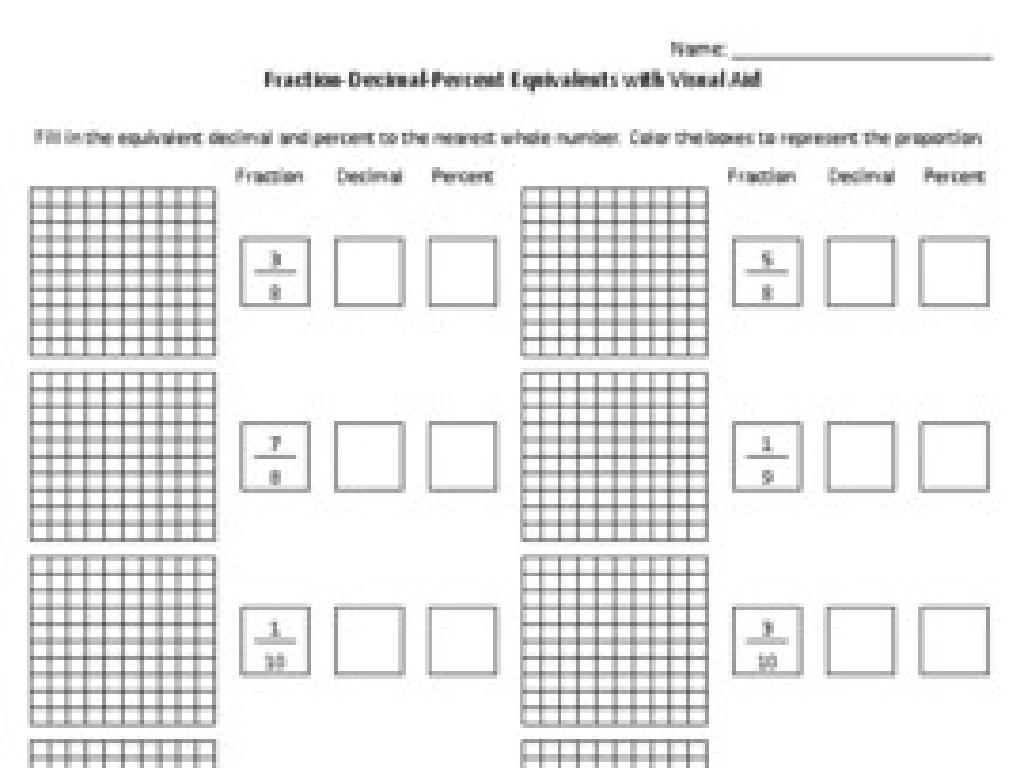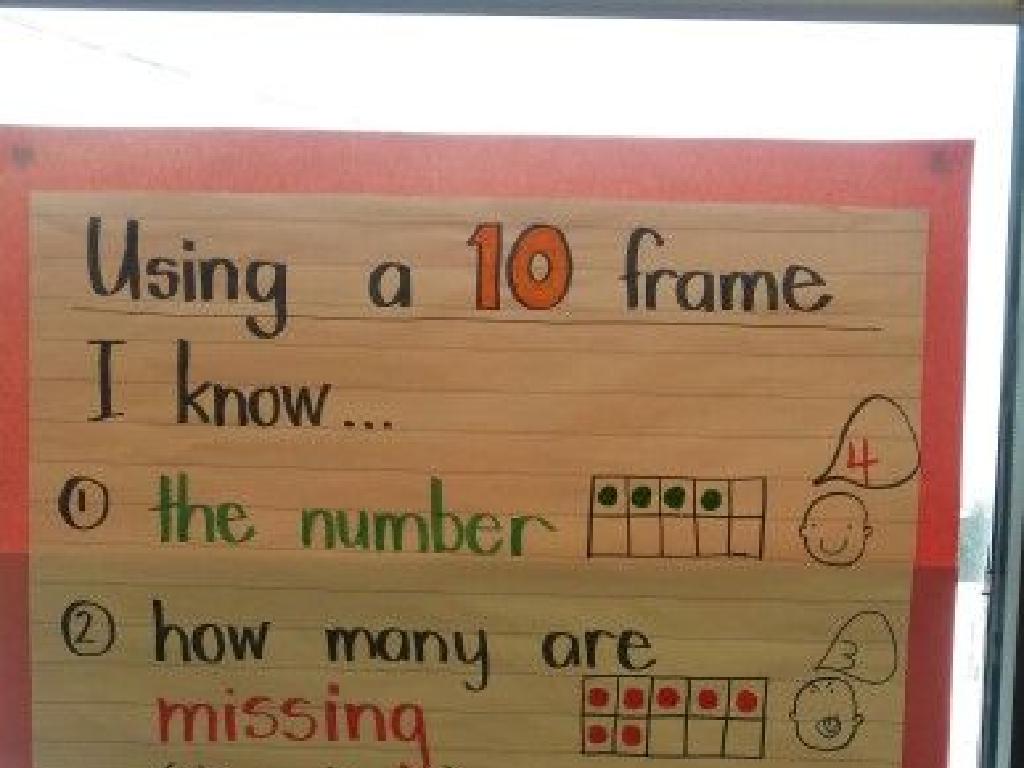Does X Satisfy An Equation?
Subject: Math
Grade: Sixth grade
Topic: One-Variable Equations
Please LOG IN to download the presentation. Access is available to registered users only.
View More Content
Does x Satisfy the Equation?
– Understanding one-variable equations
– An equation with one unknown, like x + 3 = 7
– Meaning of satisfying an equation
– If we replace x with a number and it makes the equation true, then it satisfies the equation
– Examples of one-variable equations
– Simple equations: x – 2 = 5, 3x = 9, x/4 = 2
– Practice with real examples
– Use examples like x + 5 = 10. What number can x be?
|
This slide introduces students to the concept of one-variable equations and what it means for a value to satisfy such an equation. Start by explaining that an equation is like a balance scale; both sides must be equal. Then, discuss how a variable, usually represented by x, is a placeholder for a number we need to find. To satisfy an equation means to find the value of x that makes the equation true. Provide simple examples and encourage students to solve them. For instance, if x + 5 = 10, then x must be 5 because 5 + 5 equals 10. This exercise will help students understand the process of solving equations and the satisfaction of finding the correct value of x.
Exploring Variables in Equations
– Define a mathematical variable
– A symbol that stands for a number we don’t know yet
– ‘x’ as an unknown value
– ‘x’ often used to represent the unknown in equations
– Variables as number representatives
– In equations, variables take the place of specific numbers
– Checking if ‘x’ satisfies an equation
– Substitute ‘x’ with a number and see if the equation is true
|
This slide introduces the concept of variables in mathematics, focusing on their role in one-variable equations. A variable is a symbol, like ‘x’, used to represent an unknown value that can change. In the context of equations, variables are placeholders for numbers that we are either trying to find or that can vary. Students should understand that ‘x’ is commonly used as this placeholder. The goal is to determine what number ‘x’ can represent to make the equation true. To check if ‘x’ satisfies an equation, students will learn to substitute ‘x’ with a number and perform the arithmetic to see if both sides of the equation remain equal. This foundational knowledge is crucial for solving more complex algebraic equations in the future.
Solving for ‘x’ in One-Variable Equations
– Methods to find ‘x’ value
– Use inverse operations to isolate ‘x’
– Addition/Subtraction in equations
– If equation is x + 3 = 7, subtract 3 from both sides to find x
– Examples of one-variable equations
– For x – 5 = 10, add 5 to both sides to solve for x
– Practice solving for ‘x’
– Try x + 4 = 12 and x – 2 = 7 on your own
|
This slide introduces students to the concept of solving for ‘x’ in one-variable equations. Emphasize the use of inverse operations, such as addition and subtraction, to isolate ‘x’ on one side of the equation. Provide clear examples, such as x + 3 = 7 and x – 5 = 10, and demonstrate step-by-step how to solve these equations. Encourage students to practice with additional examples and ensure they understand the process before moving on to more complex operations. The goal is for students to become comfortable with these foundational skills in algebra.
Does x Satisfy the Equation?
– How to test if ‘x’ fits the equation
– Substitute ‘x’ in the original equation
– Replace ‘x’ with its value and calculate both sides
– Ensure both sides balance
– If the results are the same, ‘x’ is a solution
– Practice with examples
– Try with x=3 in 2x+4=10 to check if it works
|
This slide is aimed at teaching students the process of checking whether a given value for ‘x’ satisfies a one-variable equation. Start by explaining the importance of verifying solutions in algebra. Demonstrate the substitution of ‘x’ with its proposed value and work through the equation to see if both sides match. If they do, the value is a correct solution. Provide several practice equations for students to solve, such as 2x+4=10, and guide them through the process of checking their answers. Encourage students to ask questions and discuss why it’s crucial to verify solutions.
Equation Solving Practice
– Solve equations as a class
– Work through practice problems
– Use sample equations to apply what we’ve learned
– Explain your thought process
– Share how you figured out if x satisfies the equation
– Collaborate and learn together
– Discuss different methods and solutions with peers
|
This slide is designed to engage students in a collaborative problem-solving activity focused on determining if a given value of x satisfies an equation. Start with simpler equations and gradually increase complexity. Encourage students to volunteer to solve problems on the board, explaining each step. Emphasize the importance of understanding the process rather than just getting the answer. Facilitate a discussion where students can compare different approaches to solving the same problem. Provide guidance and clarification as needed. Possible activities include solving equations in pairs, small groups, or a math relay race where each student solves a part of the problem.
Group Activity: Equation Relay
– Break into small groups
– Solve equations step-by-step
– Each member solves one part of the equation
– Pass to the next person after each step
– First group to finish correctly wins
– Verify each step for accuracy to win
|
This activity is designed to encourage teamwork and understanding of solving equations in a fun and competitive manner. Divide the class into small groups of 4-5 students. Provide each group with a set of equations. Each student in the group is responsible for solving one step of the equation before passing it on to the next member. This will continue until the equation is completely solved. The first group to finish with the correct solution wins a small prize. Ensure that each group understands they must work together and verify each other’s work for accuracy. This will not only help them practice solving equations but also reinforce the importance of each step in the process. Possible equations to use: 2x + 3 = 11, x/4 – 2 = 5, 3x – 7 = 2x + 1.
Conclusion: Does x Satisfy the Equation?
– Recap on satisfying an equation
We reviewed how to determine if a value for x makes an equation true.
– Homework for extra practice
Solve problems 1-10 on page 47 of your textbook.
– Resources for additional help
Use class notes, textbook, and online videos for help.
– Encourage questions and review
|
As we conclude today’s lesson, remind students of the key concept: determining if a specific value for x satisfies a given one-variable equation. For homework, assign problems that reinforce this concept, ensuring students have ample practice. Encourage them to utilize all available resources, such as class notes, the textbook, and educational videos found online. Remind them that understanding comes from practice and that seeking help when needed is crucial. During the next class, allocate time for students to ask questions and go over homework answers to clarify any misunderstandings.





